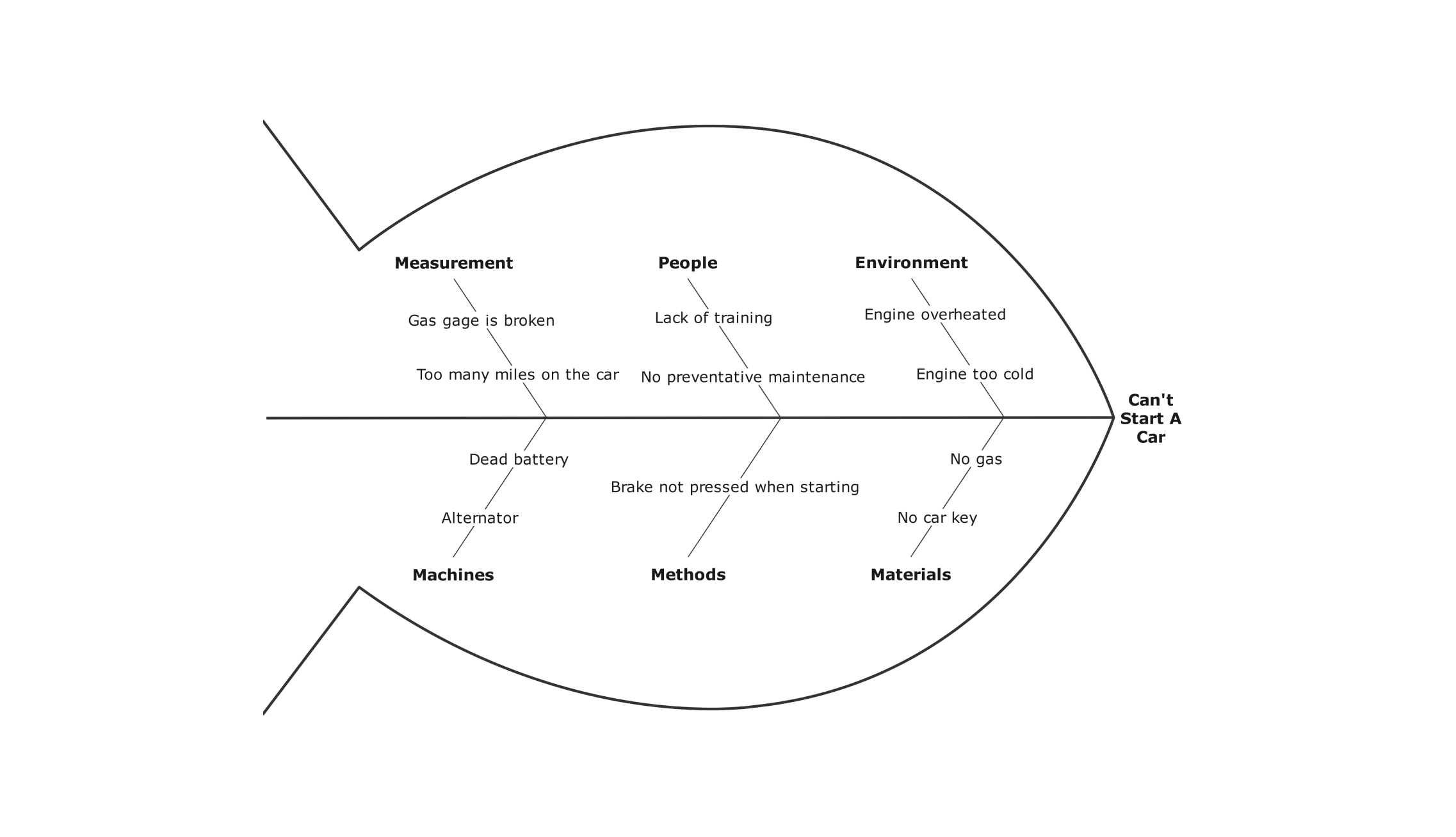- All templates
- Fishbone diagram templates
- Electrolyte fishbone diagram
About this electrolyte fishbone diagram
The electrolyte fishbone diagram is handy for figuring out electrolyte imbalances. It covers main electrolytes like sodium, potassium, and chloride, showing their standard ranges and possible causes of imbalances.
Like a fish skeleton, the head shows the main problems, like high or low sodium. The bones branching out are the potential causes. They are organized into different categories, like lung problems or issues with how your body processes food.
It provides a concise overview and includes helpful hints throughout. For example, High Sodium may indicate dehydration. It makes it easier to understand the issue and its solution.
The best part is how flexible this template is. You can easily personalize it, customize branches, tweak categories, and add details that matter. It's useful for everyone, whether you're just learning about electrolytes or a pro.
For example, if someone has high sodium, you might point to dehydration, too much salt, or certain meds as possible causes. Knowing these options, you can realize the most likely culprit and suggest the best solution.
Whether you're a doctor, nurse, or other medical expert, it helps you understand and tackle electrolyte problems head-on. Understanding different factors makes it simpler to recommend effective treatment plans.
It guides you to the core of the problem and helps you collaborate with your team to offer better solutions to your patients.
Related templates
Get started with EdrawMax today
Create 210 types of diagrams online for free.
Draw a diagram free Draw a diagram free Draw a diagram free Draw a diagram free Draw a diagram free







